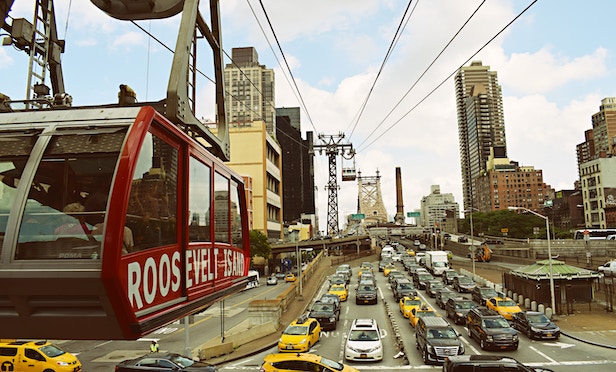 The CBC recommends a number of revenue raises to help fund the state's transportation needs, including congestion pricing in New York City.
The CBC recommends a number of revenue raises to help fund the state's transportation needs, including congestion pricing in New York City.
NEW YORK CITY—As Albany lawmakers continue to debate how the state will adequately fund the state's transportation infrastructure, the Citizens Budget Commission in a report released on Wednesday is advocating for implementing congestion pricing in New York City as one way to rise needed revenue.
The report, authored by Jamison Dague, director of infrastructure studies at the Citizens Budget Commission, chronicles the factors fueling the state's transportation infrastructure needs and the years of funding shortfalls that have both the bridge and highway network, as well as its mass transit system in disrepair.
The report delves into a host of funding options that could be implemented to increase revenues, particularly: raising user fees (fuel taxes, motor vehicle taxes and tolls) and instituting congestion pricing.
“Placing New York's highway system on a more sound fiscal footing requires the state to pursue multiple options for increasing revenue, including increases to current user fees—fuel taxes, motor vehicle fees, vehicle fees, and employing congestion pricing in New York City,” Dague writes. He adds that raising fuel, taxes, vehicle fees and toll rates to those charged by neighboring states, could raise significant funding in the short term.
However, long-term he advises that New York State should shift from a fuel taxes revenue formula toward a more sustainable Vehicle-Miles Traveled fee.
The report calculates that raising motor vehicle fees to rates equal to those charged in New Jersey or Vermont could raise between $568 million to $1.7 billion annually.
Under the current distribution formula of New York's motor vehicle fees, the increase would raise between $315 million and $940 million a year for highways; $157 million and $468 million for mass transit and $95 million and $285 million to other state funds.
Dague estimates that increasing all three user fees could raise up to $4.2 billion a year, but he notes that such a plan would be “politically difficult and could harm the state's competitiveness.”
In terms of congestion pricing, while there are a number of plans under review in Albany, including a plan forwarded by Gov. Andrew Cuomo that is included in his Executive Budget that is projected to raise approximately $1 billion in net revenues to support MTA capital investments. The governor's proposal calls for congestion pricing to go into effect in New York City by 2021.
If implemented, the CBC notes that while it would be a first in the US, congestion pricing programs have been implemented in other global cities, including Singapore, London and Stockholm. In those cities, traffic in the affected areas have been reduced, but revenues from the program in those cities fell short of projections.
“Congestion pricing in New York City can be an effective tool for reducing traffic in the Manhattan Central Business District and for raising revenue for the transportation system,” the report states.
CBC's Dague suggests, “Given the current funding shortfall and poor condition of the state's transportation assets, the governor and legislature should develop and advance a comprehensive proposal this year, one that raises sufficient revenues to reduce transportation funding shortfalls ad to support additional mass transit service to meet the needs of those drivers who choose to switch modes.”
© Touchpoint Markets, All Rights Reserved. Request academic re-use from www.copyright.com. All other uses, submit a request to [email protected]. For more inforrmation visit Asset & Logo Licensing.







